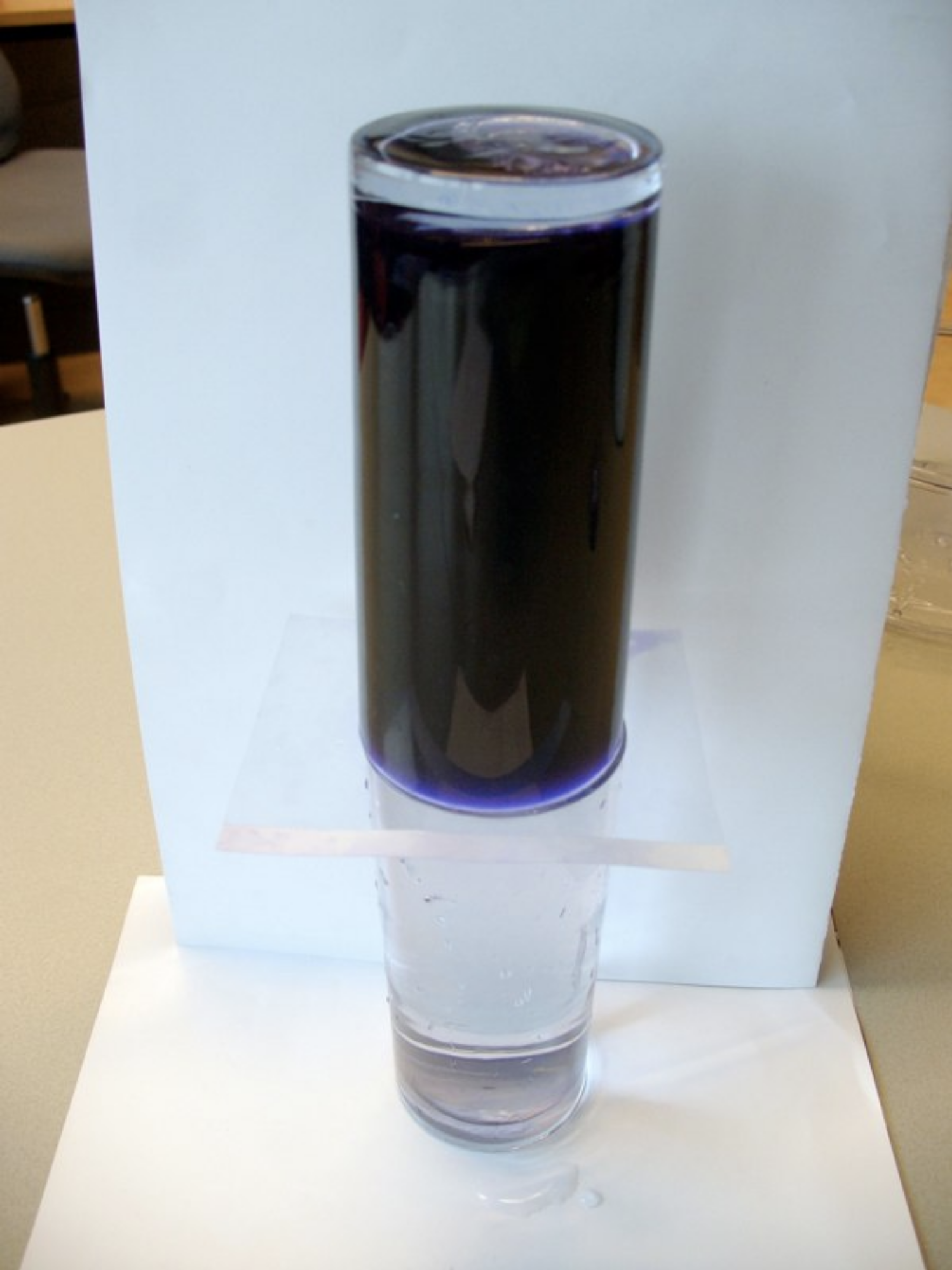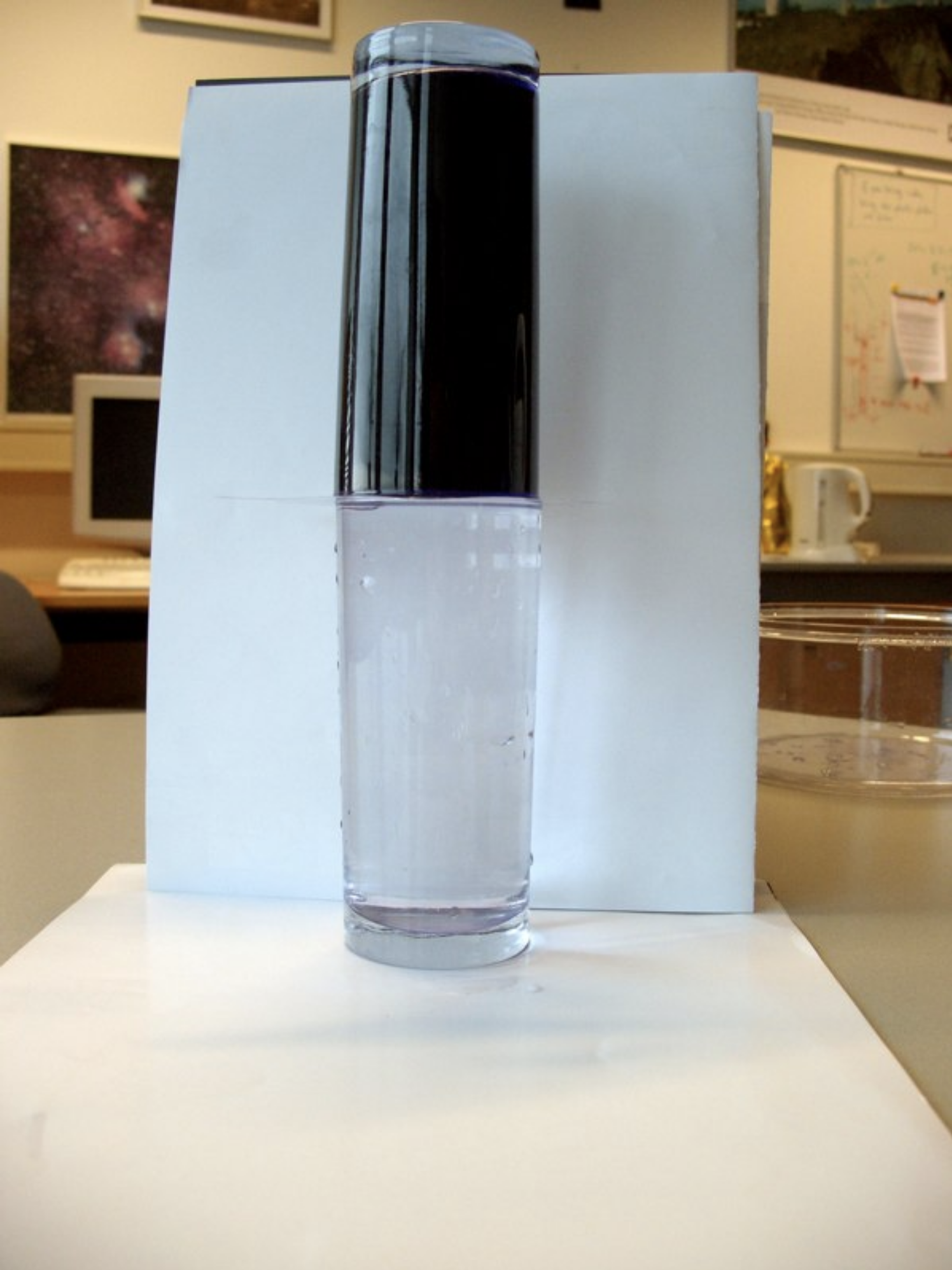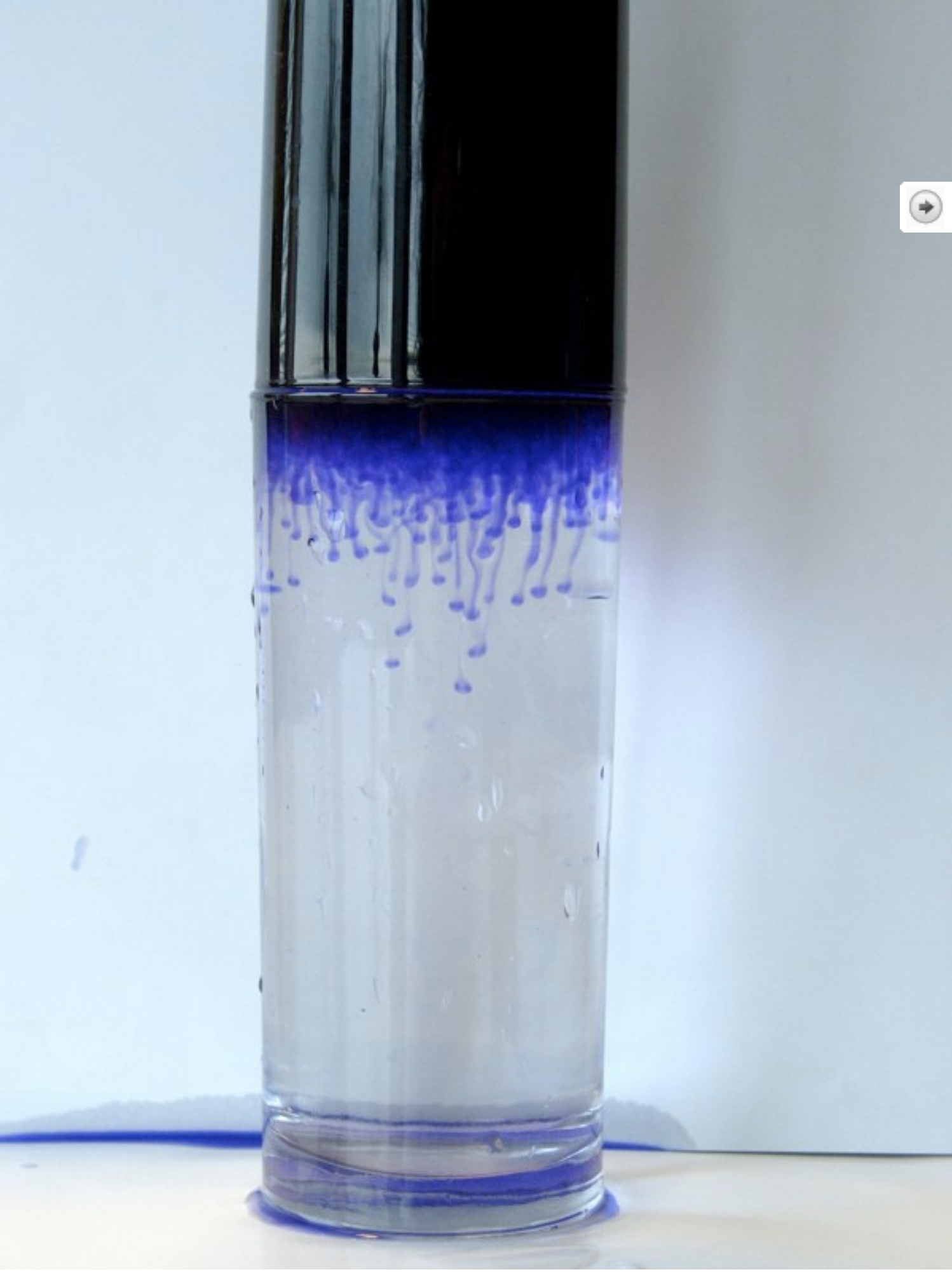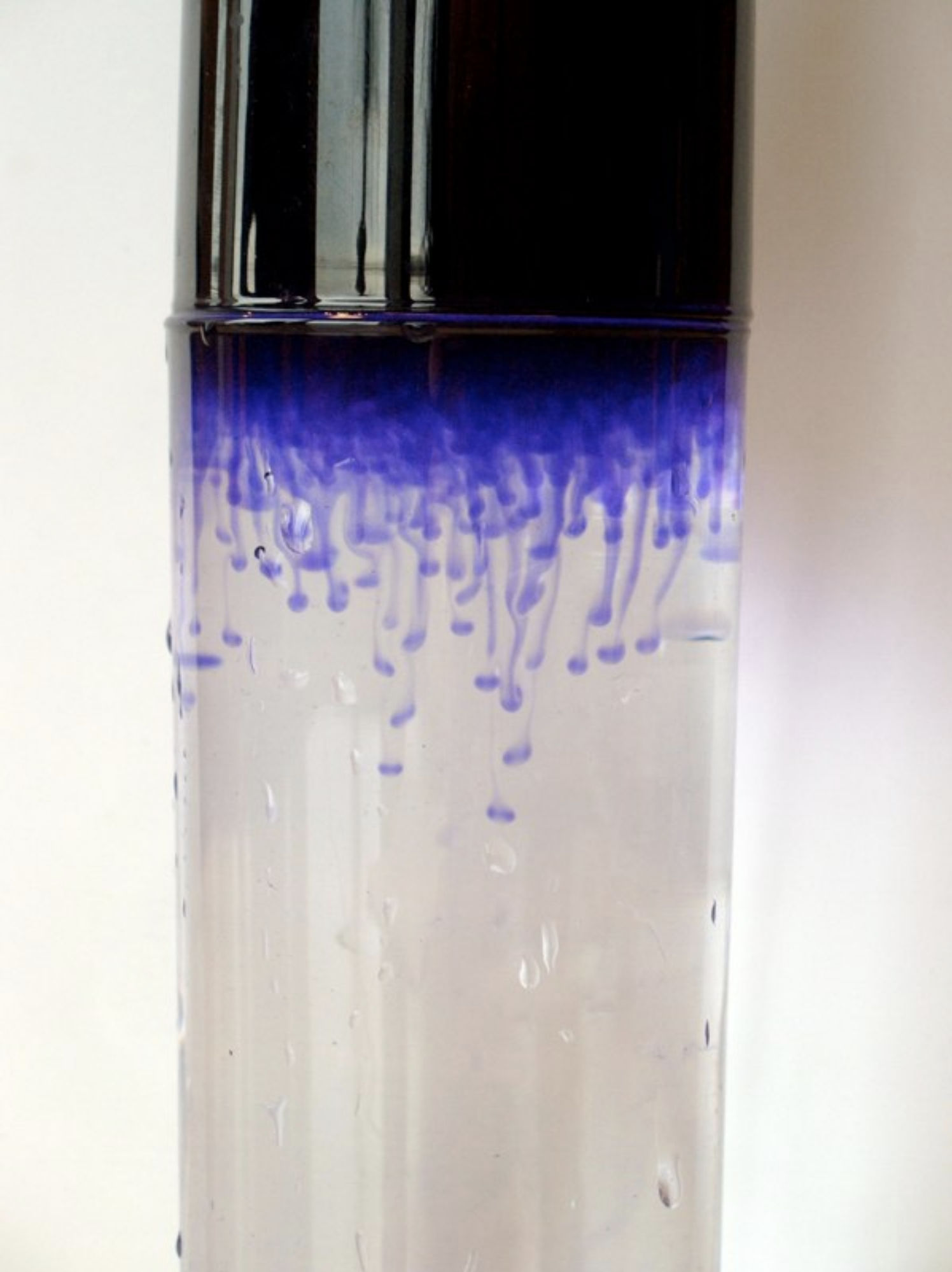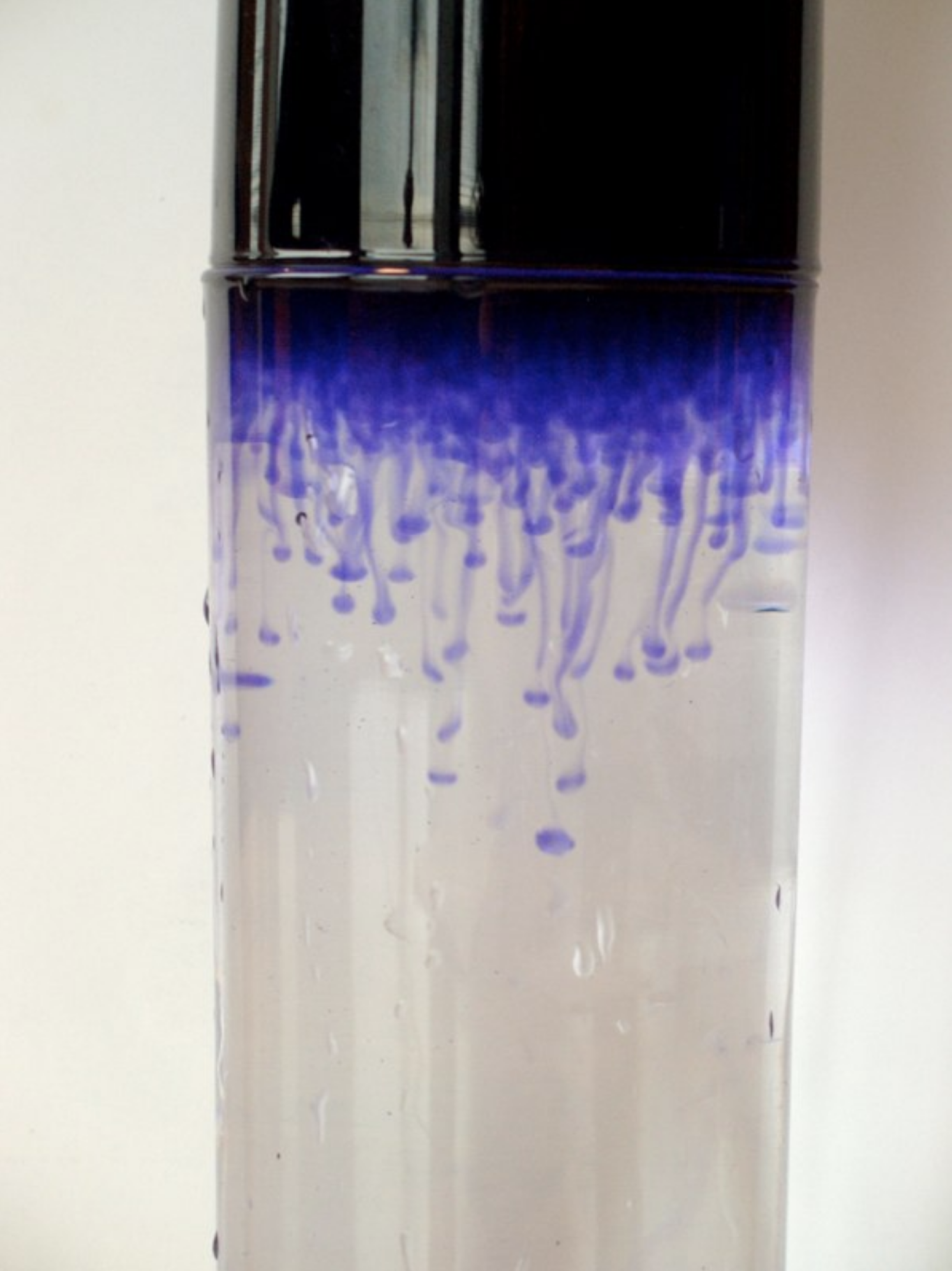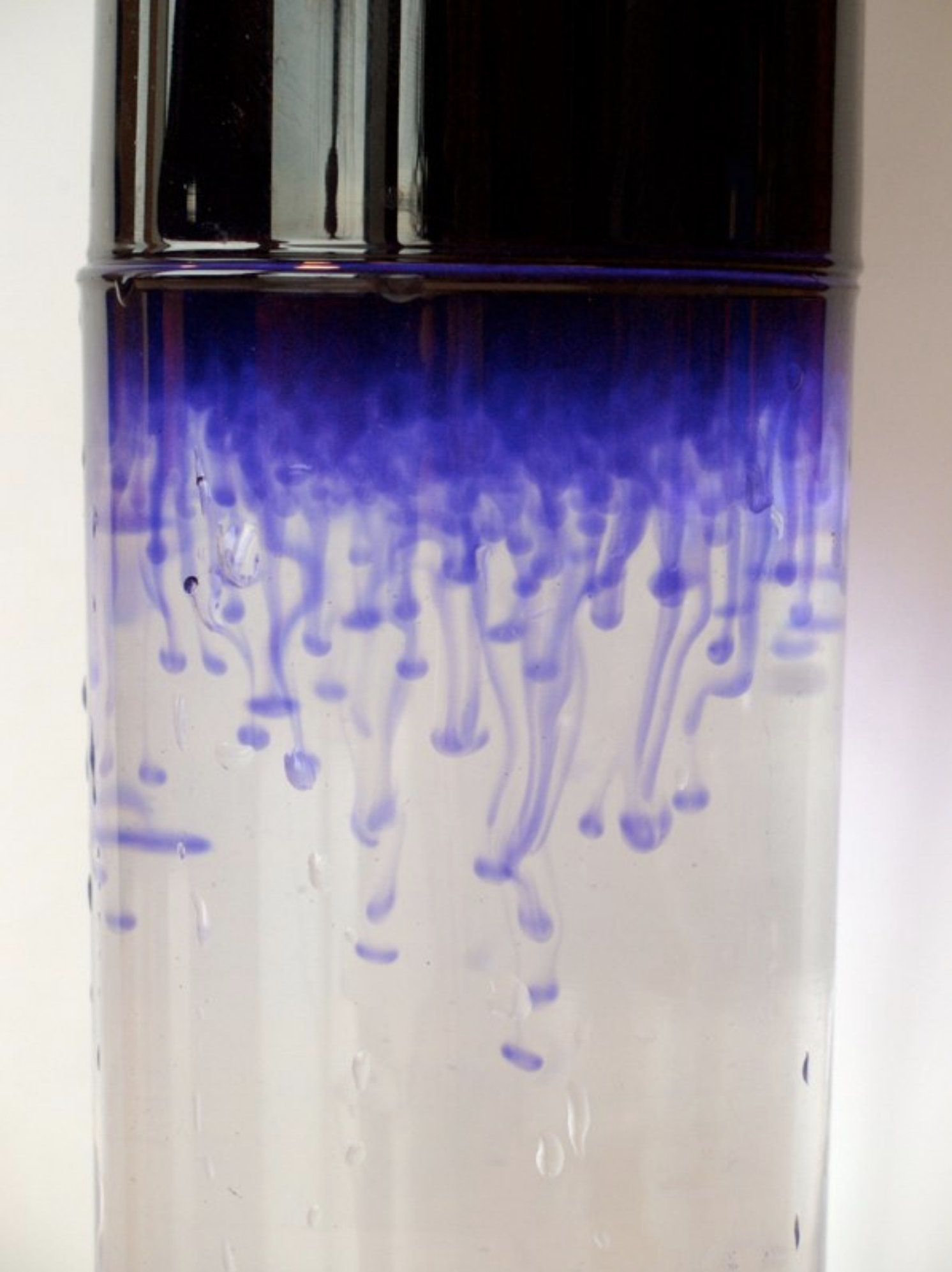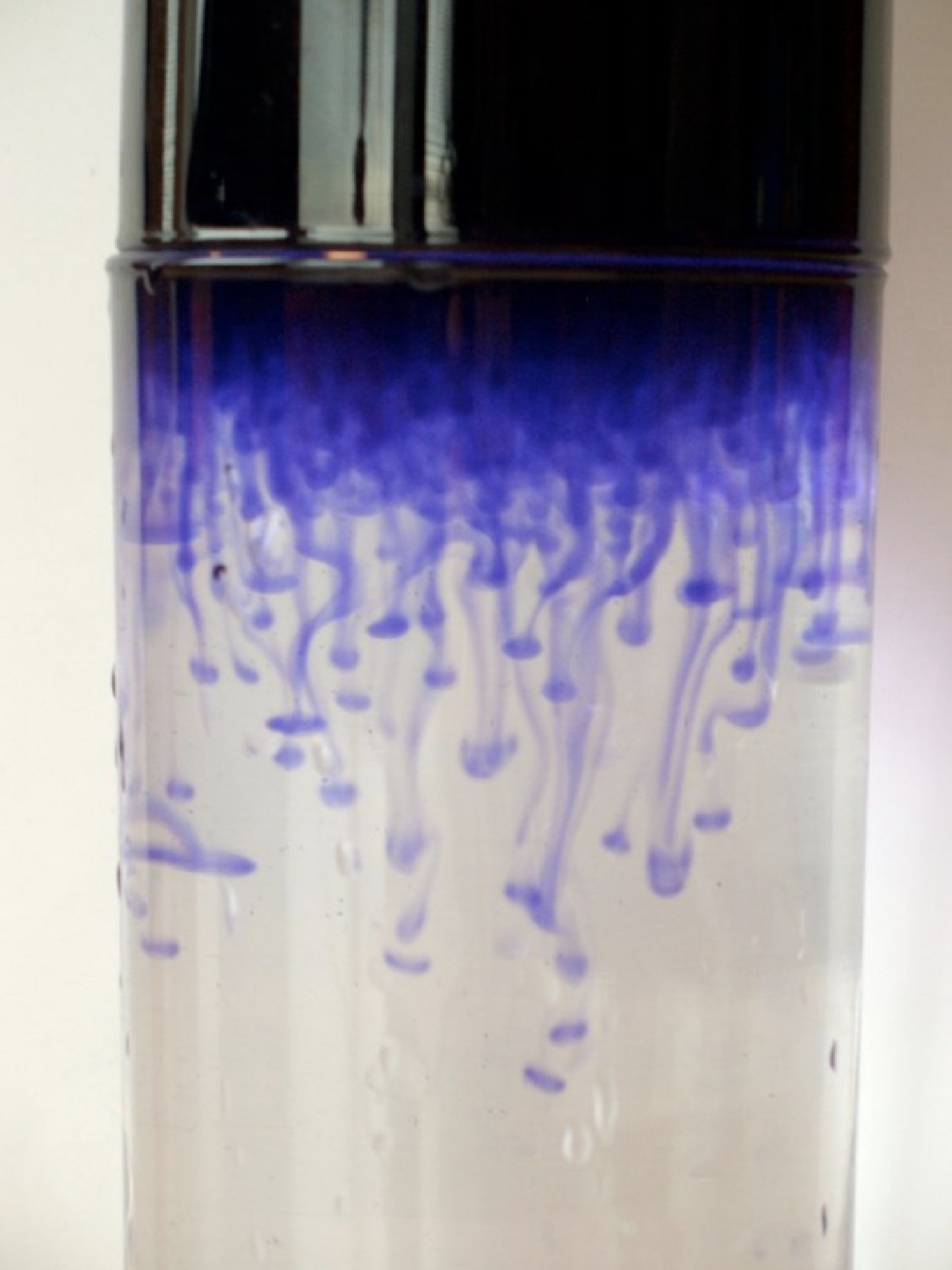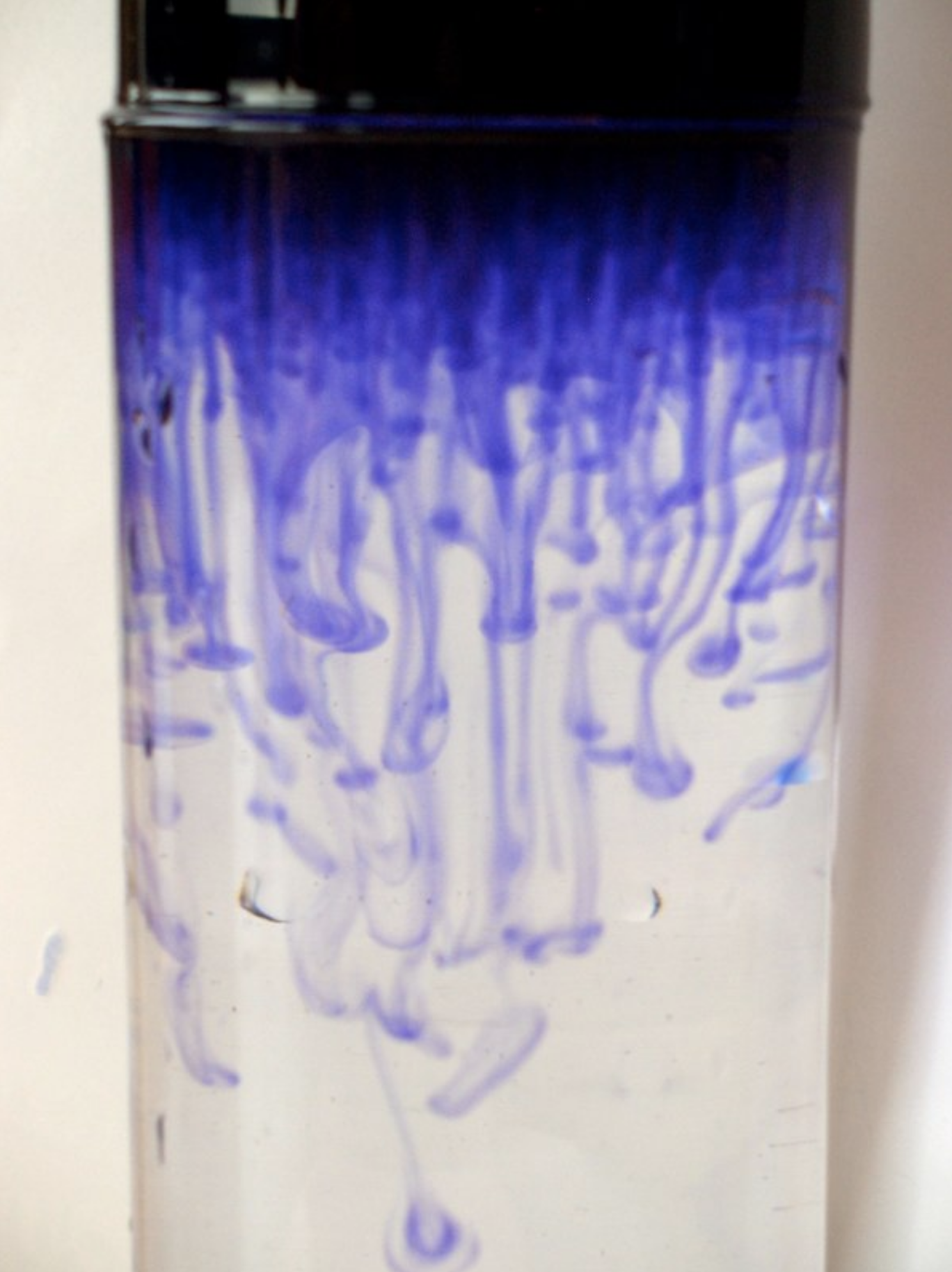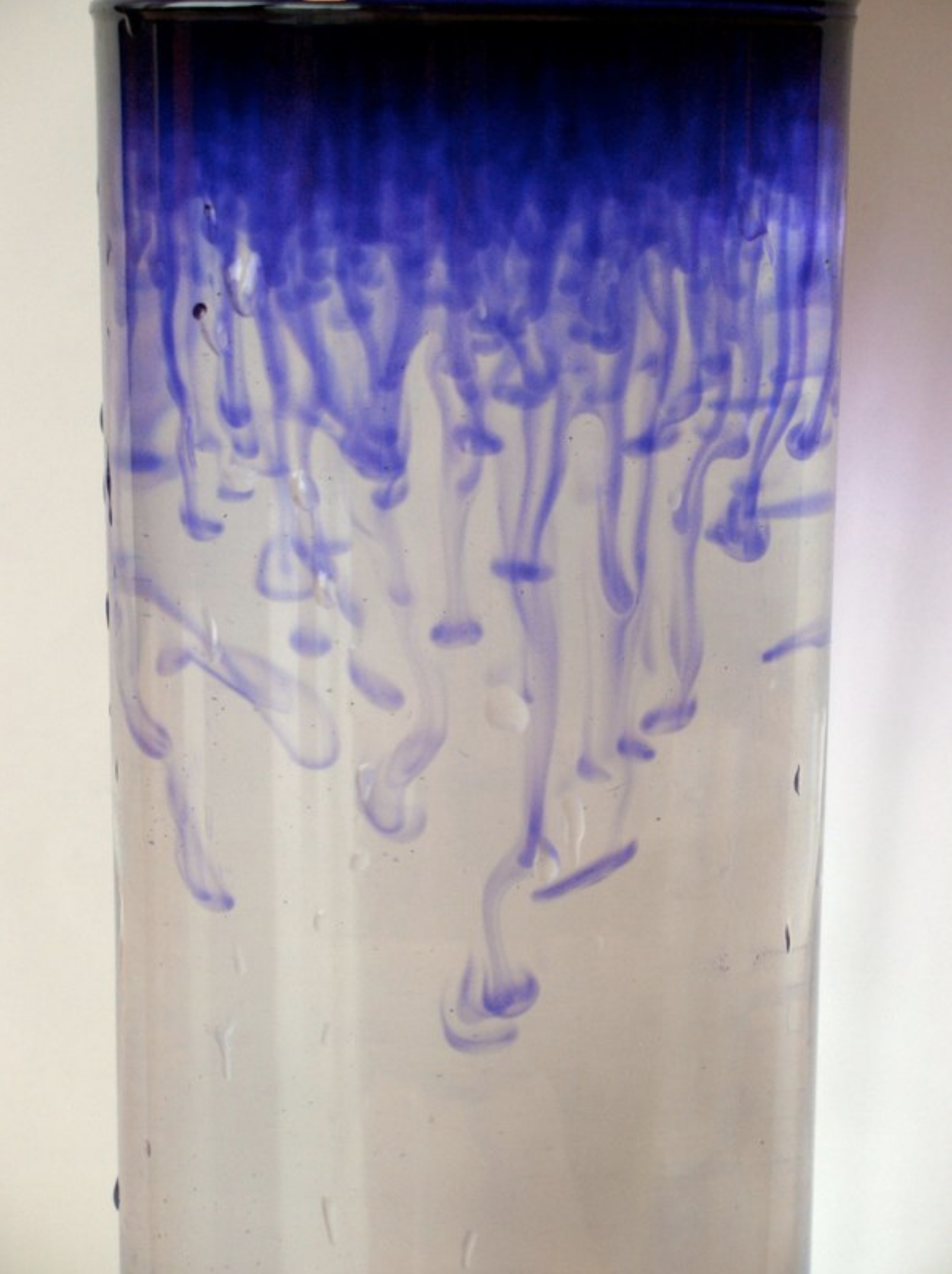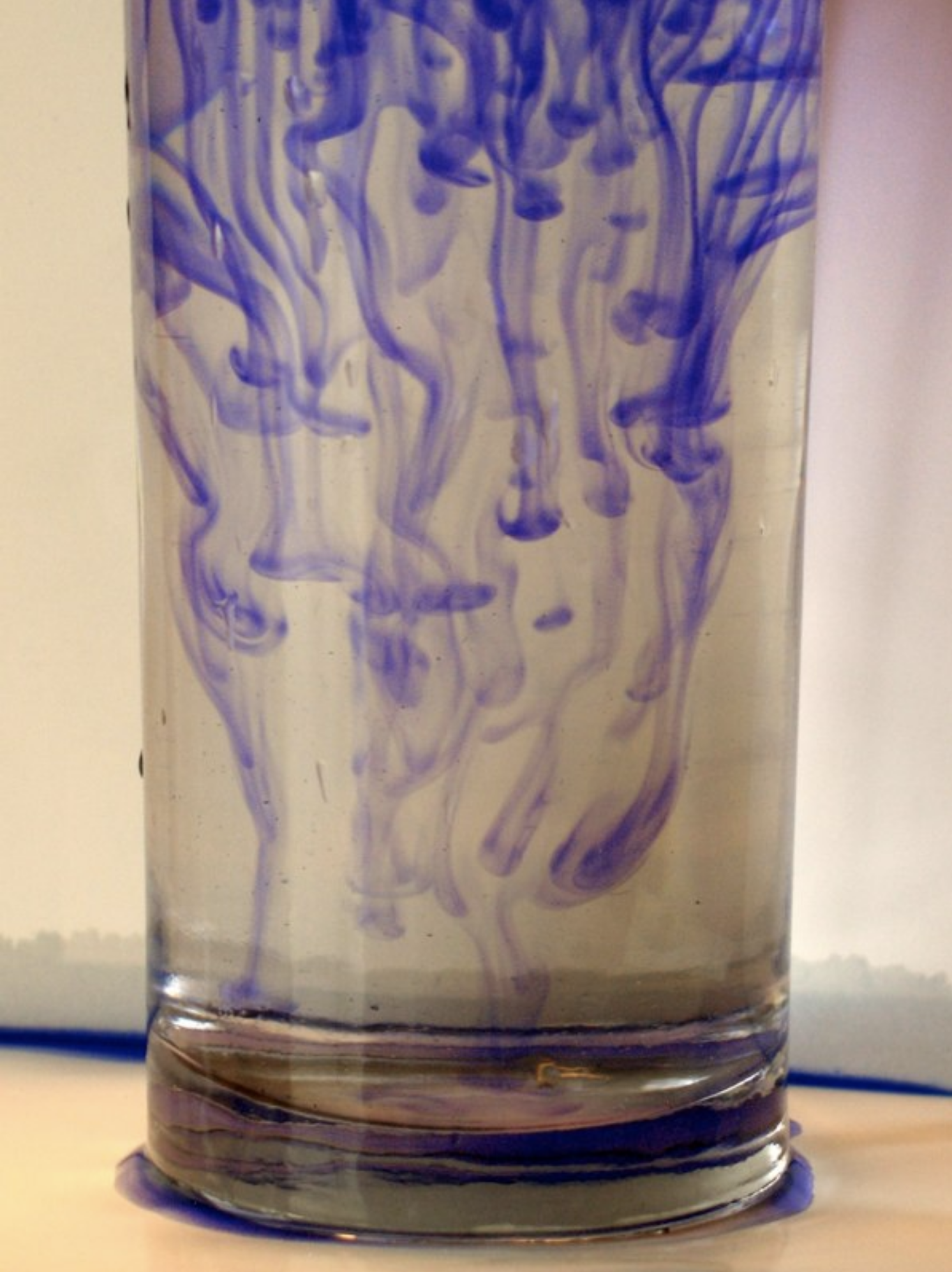Thermohaline Mixing
Development of thermohaline mixing (salt-fingers) in a cold fresh plus hot salty water experiment
Thermohaline mixing is a hydrodynamic instability that arises when an unstable gradient in composition is stabilized by a gradient in temperature. Its name derives from the greek words for 'heat' and 'salt'. Because it involves the diffusion of two different components (particles and heat) it belongs to the more general class of double-diffusive instabilities. In the ocean this instability can occur, for example, in regions where the evaporation leaves a warm layer of saltier water on top of less salty, cooler water. In this situation the saltier water can sink only after exchanging its heat excess. The optimal configuration for an efficient heat exchange requires a large contact surface; long fingers satisfy this requirement, reason for which in oceanography this instability is called "Salt fingers".
This instability has a major role in the Earth climate system, since
it regulates the ocean conveyor belt, a large scale circulation also
known as Thermohaline circulation. This circulation helps
redistributing heat across latitudes in the Earth ocean-atmosphere
system.
Thermohaline mixing can also occur in stars in case of inverse mean molecular weight gradients in a thermally stabilized medium. This can take place during the accretion of material in a binary system or in the case of off-center burning. Thermohaline mixing can be important also in red giant stars, where the mixing process can help explaining some anomalous surface abundances. In these stars a reaction of the pp-chain is able to create an inversion in the mean molecular weight gradient, as the H-shell burning operates in an homogenous region (due to the first dredge-up). The resulting thermohaline mixing could be responsible for the destruction of 3He in low mass stars. In fact these stars are net producers of 3He in standard stellar evolution calculations, but the amount of 3He observed in the interstellar medium matches the predictions of Big-Bang nulceosynthesis. Therefore, thermohaline mixing could help to reconcile predictions of stellar evolution calculations with the observations and theoretical models of Big-Bang nulceosynthesis.
If you want to know more about the possibility of salt fingers occurring in the future Sun, take a look at my paper on "Thermohaline Mixing in Evolved Low Mass Stars" (Cantiello & Langer 2010).
It is possible to see the development of the hydrodynamical instability in a simple kitchen-experiment. All you need is water, salt, ink, a transparency and two glasses. Below you can find a few pictures of the experimental setup and of the beautiful fingers that can develop if you do things right. A tip: you just need a very small amount of salt to prepare the warm salty water that goes in the top glass. If you put too much you will see another instability: Rayleigh-Taylor. Pictures below are from this very experiment performed by myself and Evert Glebbeek at Utrecht University in 2007.


